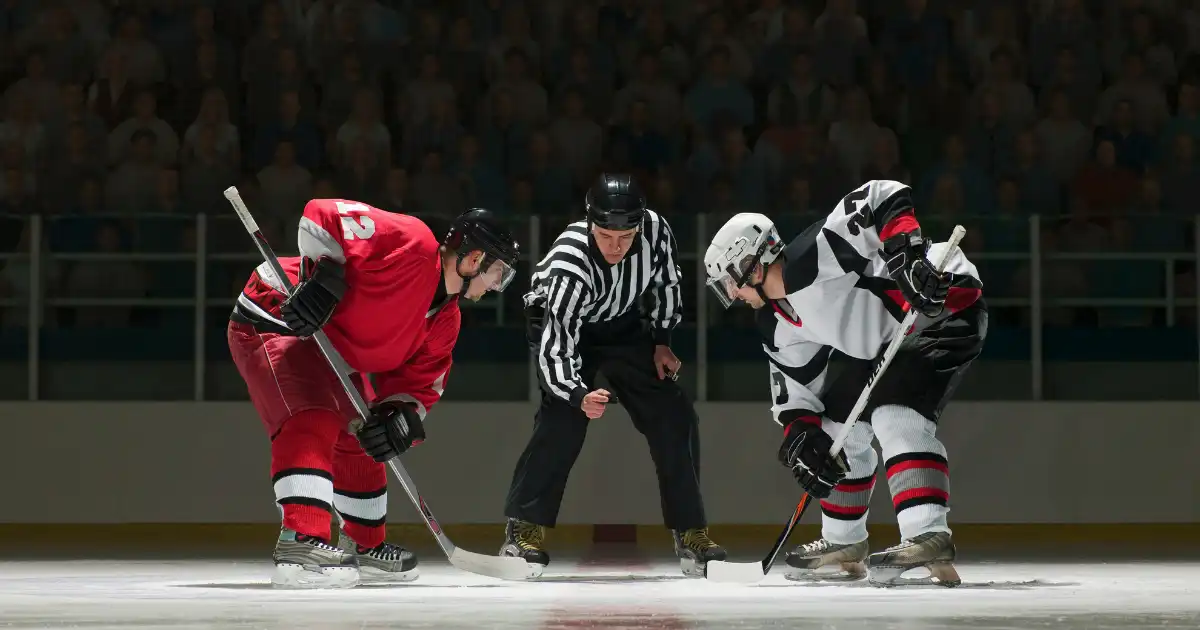The Importance of Face-off Rules and Strategy
Face-offs are a cornerstone of hockey, marking the start of every play and determining which team gains control of the puck. They occur multiple times in every game and are a critical opportunity for teams to establish possession and dictate play. Understanding the rules that govern face-offs and mastering the strategies used to win them are essential for players and teams aiming to gain a competitive edge. This article explores the rules surrounding faceoffs, the strategies players use to win them, and the vital role hockey sticks play in the process.
Face-off Rules: Structure and Positioning
The rules governing faceoffs ensure fairness and structure, providing a level playing field for both teams. A face-off occurs after stoppages in play, such as goals, icing calls, or penalties. The location of the face-off depends on the nature of the stoppage. For instance, a goal leads to a face-off at center ice, while icing results in a face-off in the offending team’s defensive zone.
Players must adhere to strict positioning rules during face-offs. The two centermen taking the draw stand opposite each other, their sticks placed on the ice within the designated face-off circle. The defending team typically places their stick down first, a rule designed to reduce unfair advantages and give a slight edge to the attacking team in offensive zone draws. Other players must position themselves outside the circle until the puck is dropped.
Officials enforce these rules meticulously to prevent infractions. Any premature movement, such as a player entering the circle early or failing to position their stick correctly, can result in the centerman being ejected from the face-off dot. This penalizes the offending team by forcing a less prepared player to take the draw.
Face-off Strategies for Gaining Possession
Winning a face-off is more than just a physical contest; it’s a combination of timing, technique, and teamwork. The centerman’s primary objective is to gain control of the puck and direct it to a teammate. Different strategies can be employed depending on the situation and location of the face-off.
1. Stick Techniques
Centermen use a variety of stick movements to outmaneuver their opponent. These include sweeping motions to pull the puck back, quick lifts to deflect the opponent’s stick, or even tying up the opponent’s blade to allow a teammate to retrieve the puck. Anticipating the referee’s drop of the puck is crucial, as even a split-second delay can lead to a lost face-off.
2. Body Positioning
Beyond stickwork, players leverage their body to gain an advantage. A low, strong stance provides balance and power, enabling the centerman to shield the puck or disrupt the opponent’s movements. Proper body positioning can also help prevent being pushed out of the play.
3. Team Support
Face-off wins often require the support of wingers and defensemen. Teammates positioned outside the circle must react quickly, either to retrieve a loose puck or to block an opponent from gaining possession. Pre-planned face-off plays, like setting up for a shot or clearing the zone, highlight the importance of teamwork and communication.
4. Zone-Specific Tactics
Face-off strategies also vary by zone. In the defensive zone, centermen may focus on safely drawing the puck back to a defenseman for a quick clear. In the offensive zone, the goal might be to set up a scoring chance by directing the puck to a shooter or initiating a play. Neutral-zone face-offs often prioritize puck control to transition into offensive opportunities.
The Role of Hockey Sticks in Face-offs
Hockey sticks are the centerman’s primary tool during a face-off, and their design plays a pivotal role in success. A well-crafted stick allows for precision, power, and durability, all essential in the high-stakes environment of the face-off circle.
1. Blade Design
The curve and lie of a stick blade can influence how effectively a player can win a face-off. Some players prefer a flatter blade for increased control when sweeping the puck, while others may choose a more curved blade for added leverage.
2. Flex and Durability
Stick flex affects how much force a player can generate during the draw. A lower flex allows for more snap, which can be advantageous when attempting a quick win. Durability is also crucial, as repeated contact with the ice and opposing sticks during face-offs can cause wear and tear.
3. Customization
Many players customize their sticks to suit their face-off style. Adjustments to blade tape, grip, and even stick length can provide the subtle advantages needed to dominate in the circle.
Final Thoughts
Face-offs are a microcosm of hockey’s broader strategic battles, combining skill, strength, and teamwork. By adhering to the rules, players ensure fair competition, while strategic approaches and stick technology enable them to maximize their chances of gaining possession. For teams and players aiming to excel, mastering the art of the face-off is non-negotiable. From the first drop of the puck to the final buzzer, face-offs remain a critical aspect of the game, shaping its flow and outcome. Whether you’re a coach, player, or passionate fan, understanding the importance of face-offs deepens your appreciation for the skill and strategy that define the sport of hockey.

